Rich Piana, the world's renaissance man of the 2010s, wasn't in KILL IT mode all the time. While we saw many of his high-energy, pump-fueled highlights (such as in the Bigger by the Day series), the founder of 5% Nutrition also loved to relax and enjoy himself.
The only issue is that he often relaxed with the help of Ben and Jerry's Ice Cream, which is great for some post-workout carbs, but not great for us mere lesser-sized mortals who can't eat a tub a day and stay jacked.
Thankfully, 5% Nutrition has another way to reduce stress and take an edge off - with 5% Nutrition Core KSM-66 Ashwagandha, the next supplement in the 5% Nutrition Core Series.
5% Core KSM-66: One and only ingredient
KSM-66 is a premier form of ashwagandha, the popular adaptogenic herb that helps reduce cortisol levels, regulating all kinds of downstream hormones. In this article, we cover many of the areas where this supplement can help, from cortisol and stress reduction to body composition improvements to increased testosterone and fertility to better mood and reduced anxiety. By reducing cortisol, it seemingly does it all!
Unlike many of the other supplements in 5%'s Core lineup, their KSM-66 is not boosted by a secondary ingredient. This is because 600 milligrams -- what fits in one large capsule -- is the clinical dose, and as we'll cover in the research below, this ingredient doesn't really need any support. It stands on its own.
It's all covered below - but get signed up for our 5% Nutrition news alerts, there are some incredible releases on the way:
Rich Piana 5% Nutrition Core KSM-66 – Deals and Price Drop Alerts
Get Price Alerts
No spam, no scams.
Disclosure: PricePlow relies on pricing from stores with which we have a business relationship. We work hard to keep pricing current, but you may find a better offer.
Posts are sponsored in part by the retailers and/or brands listed on this page.
5% Nutrition's Core KSM-66 Ashwagandha has one and only ingredient -- 600mg of KSM-66 Ashwagandha! This is the world's most studied form of the adaptogenic herb, made and sold by Ixoreal Biomed, who calls it "The World's Best Ashwagandha". They've run numerous research trials on it, and it has a very high number of quality certifications, which is why the industry has come to love and trust it so much.
Let's dig into what you're getting when you take KSM-66 ashwagandha -- most of the effects revolve around cortisol reduction:
What is ashwagandha and what does it do?
Ashwagandha, also known as withania somnifera, as a plant that has long been used in Ayurvedic medicine, which started over 3,000 years ago in India with the practice of improving the "mind, body, and consciousness".[1] There are many Ayurvedic herbs and roots (such as turmeric / curcumin), and alongside those, ashwagandha is one of the most prominent - with modern research backing up what it's been traditional used for.
There are several health areas where ashwagandha leads to benefits -- most of them revolve around cortisol control, so we'll start there, and then get into its other downstream effects:
-
Controlling cortisol levels
Cortisol is sometimes referred to as the "stress hormone", and while it's often villainized, it's a good thing to have -- in proper amounts at the right times. The real issue is chronically-elevated cortisol levels. When cortisol is too high and stays too high, there are numerous negative health consequences consistently seen, such as:
- Poor glycemia / high blood glucose levels,[2]
- Difficulty losing fat (especially abdominal fat),[3]
- Less strength and muscle tone,[4]
- Reduced testosterone (except post-workout, when both testosterone and cortisol surge),[5]
- Uninhibited appetite.[6]
- Fertility issues.[7]
There's also a well-known link between stress leading to obesity.[8] Although it's not 100% of the time, it's clear that long-term stress and cortisol often play a role in obesity.
Point being, we need to keep stress under control. Amongst other lifestyle approaches (better sleep, better diet, exercise, getting control of finances, etc), it turns out that ashwagandha can help as well!
Ashwagandha vs. cortisol
In 2008, researchers published a study where they tested ashwagandha on users split into four groups for 60 days:[9]
- 125 milligrams once daily
- 125 milligrams twice daily
- 250 milligrams twice daily
- Placebo
At the end of the study, the group taking 250 milligrams ashwagandha twice daily had a 30.5% reduction of cortisol, significantly greater than the other groups!
Similarly, in 2012, scientists published a study performed on stressed adults that showed 60 days of 300 milligrams of ashwagandha taken twice daily helped reduce cortisol levels by 28% compared to just 8% for the placebo group.[10]
For these reasons, 600 milligrams seems to be the sweet spot -- and that's what you'll get in just one capsule of 5% Nutrition Core KSM-66.
With those effects, we get some hormonal improvements that go beyond just cortisol:
-
Other hormones: testosterone and fertility in men
Testosterone: In 2015, researchers published a landmark double-blinded, placebo-controlled study using 57 young males (average age 28 years).[11] For eight weeks, they gave them either placebo or 300 milligrams of ashwagandha twice daily (for our 600 milligram daily dose). At the end of the study, the healthy young males in the ashwagandha group saw a 15% increase in testosterone![11]
While these aren't "Rich Piana supraphysiological" levels, it's a nice boost - especially when it's very tough to boost testosterone in healthy young males without pharmaceuticals. Normally we only see effects like that in hypogonadal or infertile men. This brings us to the next study:
Fertility: As noted above, there are connections to fertility problems and cortisol.[7] In one study on infertile men, researchers found that extremely large doses of ashwagandha -- 5 grams worth daily -- improved semen quality in three months.[12] Even better, 14% of the subjects were able to get their wives pregnant, and they couldn't do so before that.
While this dose was well beyond what we see, it wasn't with the standardized KSM-66 dose, so we do include ashwagandha in any fertility stack, although there's definitely more to do -- such as taking 5% Nutrition Core D-Aspartic Acid, which we'd actually reach for first in a budget fertility stack.
Now let's get to some other advantages 5-percenters may have:
-
Athletic improvements: strength, muscle, and recovery
There have been some athletic benefits with the herb as well. First, ashwagandha has been shown to reduce perceived fatigue.[9,13] This isn't surprising with the baseline cortisol reduction and adaptogenic effects of the herb (do note that cortisol can and should go up post-workout even when on KSM).
In addition, however, the study cited above showed that healthy young males taking 600 milligrams of ashwagandha per day had significant increases in bench press and leg extension strength, and also had a greater increase in chest and arm size.[11] Unsurprisingly given the effects above, they also had less exercise-induced muscle damage compared to placebo -- meaning better recovery.
Body composition improvements
Additional studies have also demonstrated improvements in fat loss, such as a 3% decrease in body mass in the 600mg ashwagandha group compared to 1.5% in placebo.[14] This study was published in 2016 and had 52 total subjects who were chronically stressed, taking it for eight weeks. This was also another study where the active group received 300 milligrams twice daily.[14]
While we don't necessarily call ashwagandha a fat burner, the reduction of chronically-elevated cortisol can lead to the ability to reduce fat. In addition, the relaxing nature of ashwagandha allows for less stress eating -- cooler heads may prevail and you may stay on your diet just a bit better!
And on the note of cooler heads, here's where the adaptogen really shines:
-
Mental health support
Numerous studies have shown that ashwagandha significantly lowers stress levels.[9,10] This is generally based on stress-assessment questionnaires, but the statistics still shine through placebo control.
The mechanism
How does it work? Researchers who published an animal study in 2015 found that ashwagandha helps regulate GABAergic signaling.[15] This is a critical central nervous system pathway involved with "being stressed out". However, in the study, the researchers found that ashwagandha seems to inhibit the pathway, ultimately leading to lower stress levels.[15]
Reduced anxiety and improved mood
In questionnaire-based studies, ashwagandha improves test scores in anxiety and mood.[10,16] This includes the General Health Questionnaire (GHQ-28) and the Depression Anxiety Stress Scale (DASS), when comparing pre-supplement and post-study metrics.
Ashwagandha (blue line) reduces anxiety quickly and dramatically, especially when combined with relaxation techniques (pink control line). Good for a dieter who's about to be taking a stimulant!
The reductions aren't slight, either. In the GHQ-28 analysis, some subjects saw as much as a 70% and 80% reduction in anxiety and mental health issues![10] Another study saw reductions score decreased of 56.5%.[16]
Other studies have seen similarly incredible benefits, especially when combined with psychotherapy. Groups taking ashwagandha alongside therapy reported better quality of life and less anxiety.[13]
Is it a cure-all? Of course not. But as an adjunct therapy, ashwagandha is exactly what we want it to be - an incredible supplement. If you're having serious mood issues, seek a professional's help and look into sunshine, clean whole foods diet with no processed foods, and plenty of fish- and animal-based foods low in omega-6 fatty acids.
-
Some nootropic effects?
Ashwagandha may also support cognition, which isn't surprising once seeing the success of the mental health studies cited above. A study published in 2013 showed that ashwagandha prevented memory loss and reduced learning impairment in mice.[17] It could even help help combat toxicity when treating neurodegenerative diseases.[18]
-
Secondary cardiovascular and metabolic health improvements
Finally, the study comparing 125 and 250 milligrams of ashwagandha twice daily showed improvements to fasting blood sugar levels, triglycerides, and overall lipids.[9] These are often used to get baseline "grades" on metabolic health, and we find that lower overall blood sugar levels lead to easier ability to burn fat (since one is not burning sugar as much).
While it may not directly help heart health, these are metrics we look for when considering both cardiovascular and metabolic health.
Ashwagandha Dosage
As noted in many of the studies, 600 milligrams per day is what's used most frequently and successfully. Many of those studies employed 300 milligrams per day, but it's more convenient to take one capsule. However, if you've got the budget, we aren't against two capsules a day, especially for the bigger 5-Percenters out there who really need to come down a bit.
5% Core KSM-66
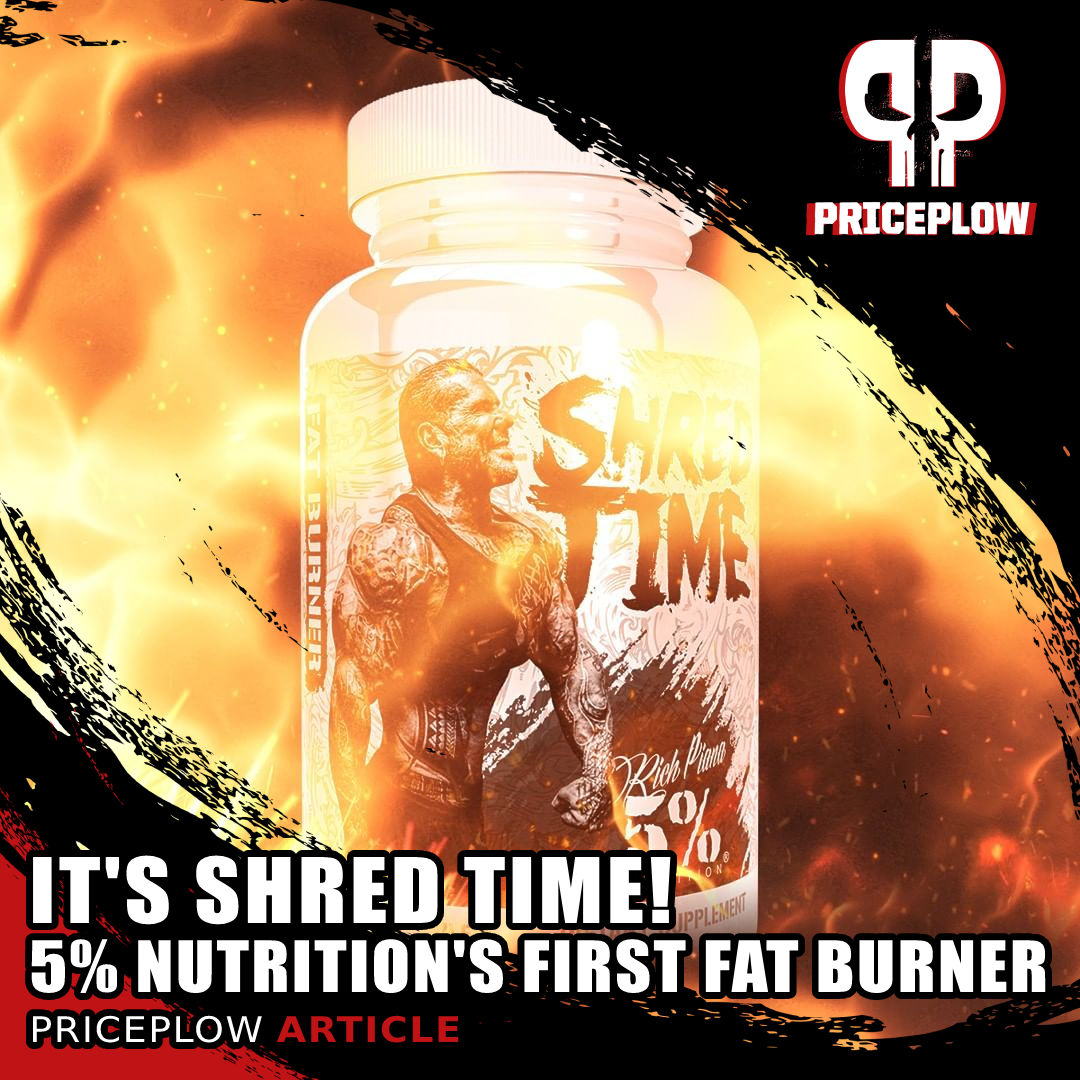
After nearly a decade of bulking, it's finally time for 5% Nutrition to release a fat burner: It's Shred Time!
There are fewer better-trusted herbal ingredients in the supplement industry than KSM-66. It's great to see that 5% Nutrition used it. One difference here, compared to the rest of their Core line, is that this is a single-ingredient formulation - no "helper" ingredient involved here. That's quite alright, because 600 milligrams is the tried-and-true, tested dosage, and ashwagandha really doesn't need much support from everything we've seen.
As mentioned in the fertility section, if chasing testosterone, hormonal, or procreation gains, 5% Core D-Aspartic Acid is a great stack here. But if you're here for the weight loss support, look at the Stage Ready and Shred Time stack.
And one last thing. Sometimes, it's great to simply have KSM-66 on hand, just in case you take a touch too much pre-workout and want to smooth it out. We're looking at you, 5150 fans!!
Rich Piana 5% Nutrition Core KSM-66 – Deals and Price Drop Alerts
Get Price Alerts
No spam, no scams.
Disclosure: PricePlow relies on pricing from stores with which we have a business relationship. We work hard to keep pricing current, but you may find a better offer.
Posts are sponsored in part by the retailers and/or brands listed on this page.
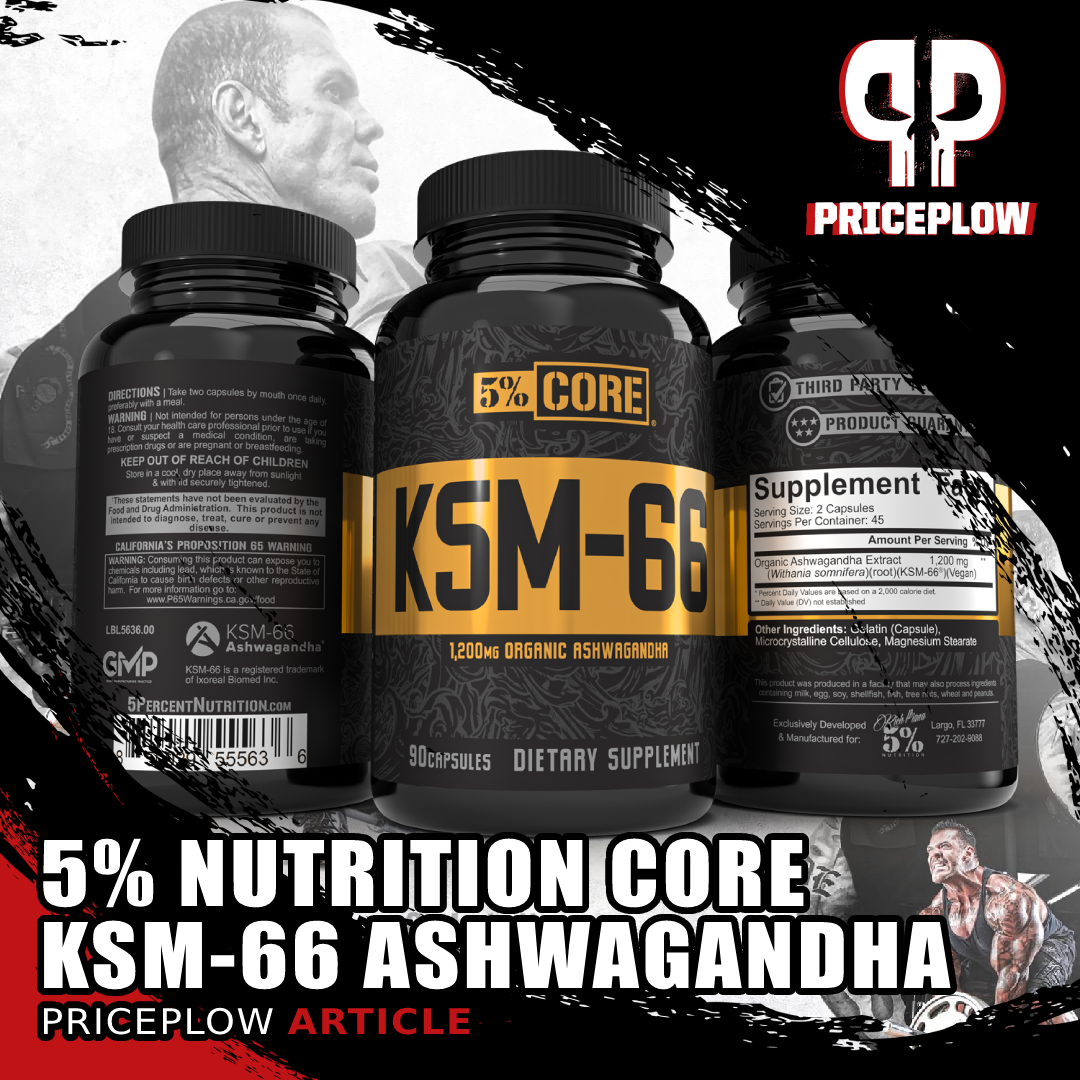
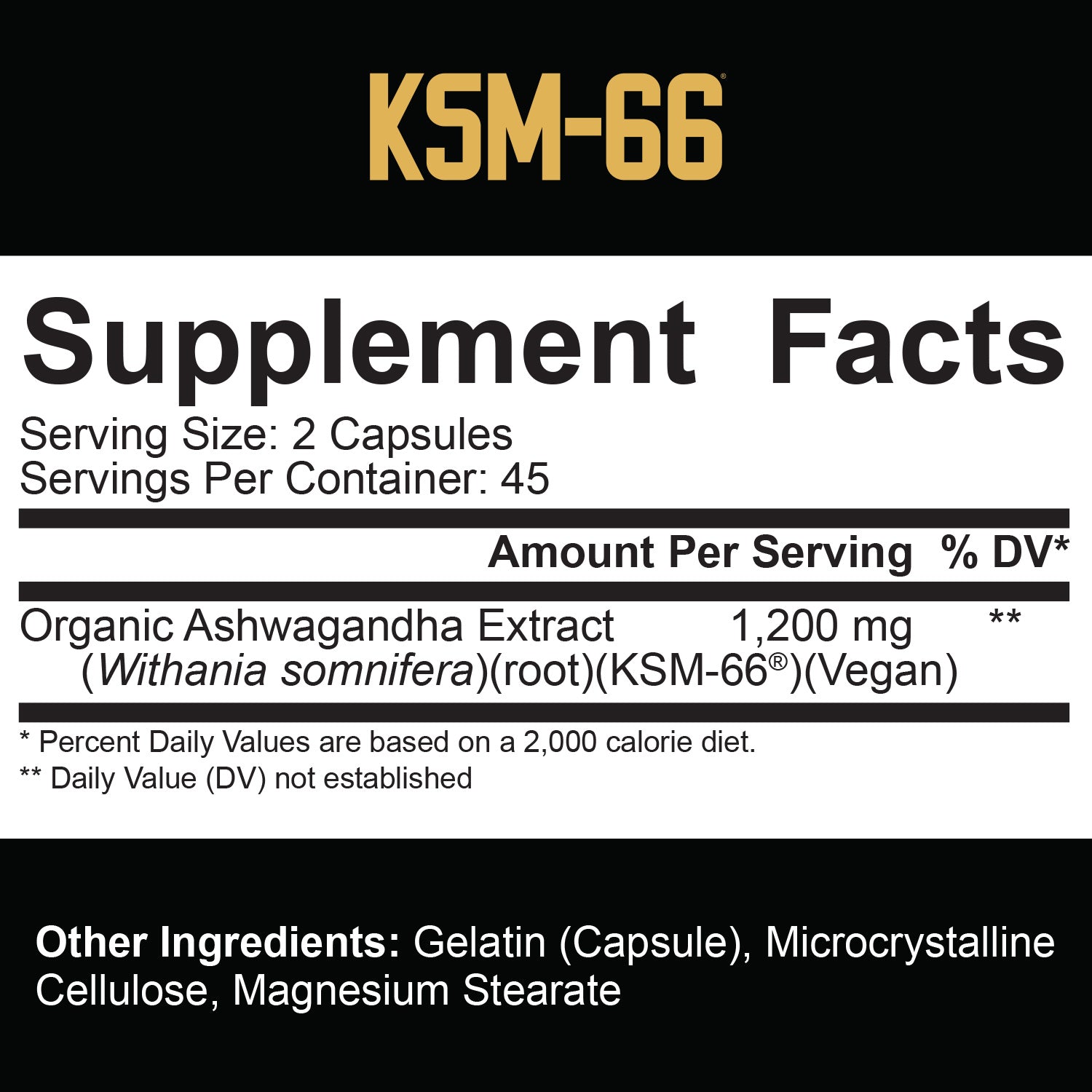


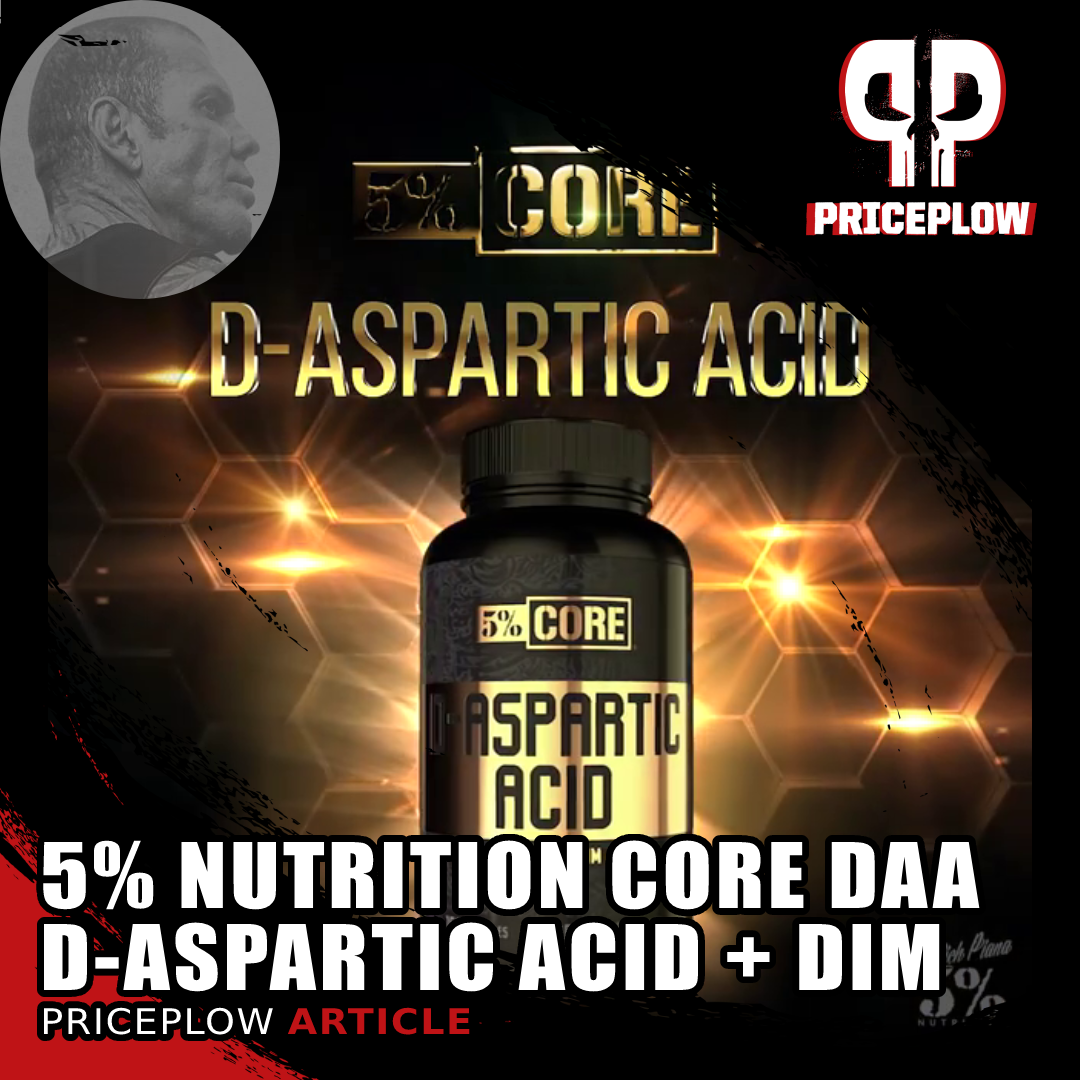
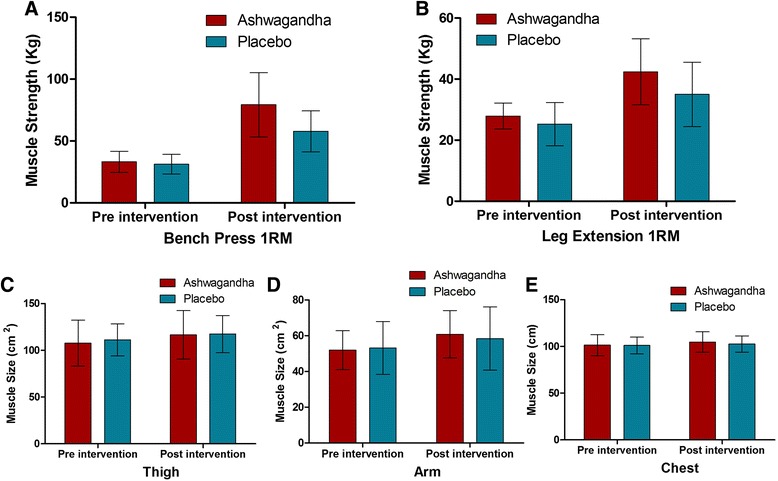

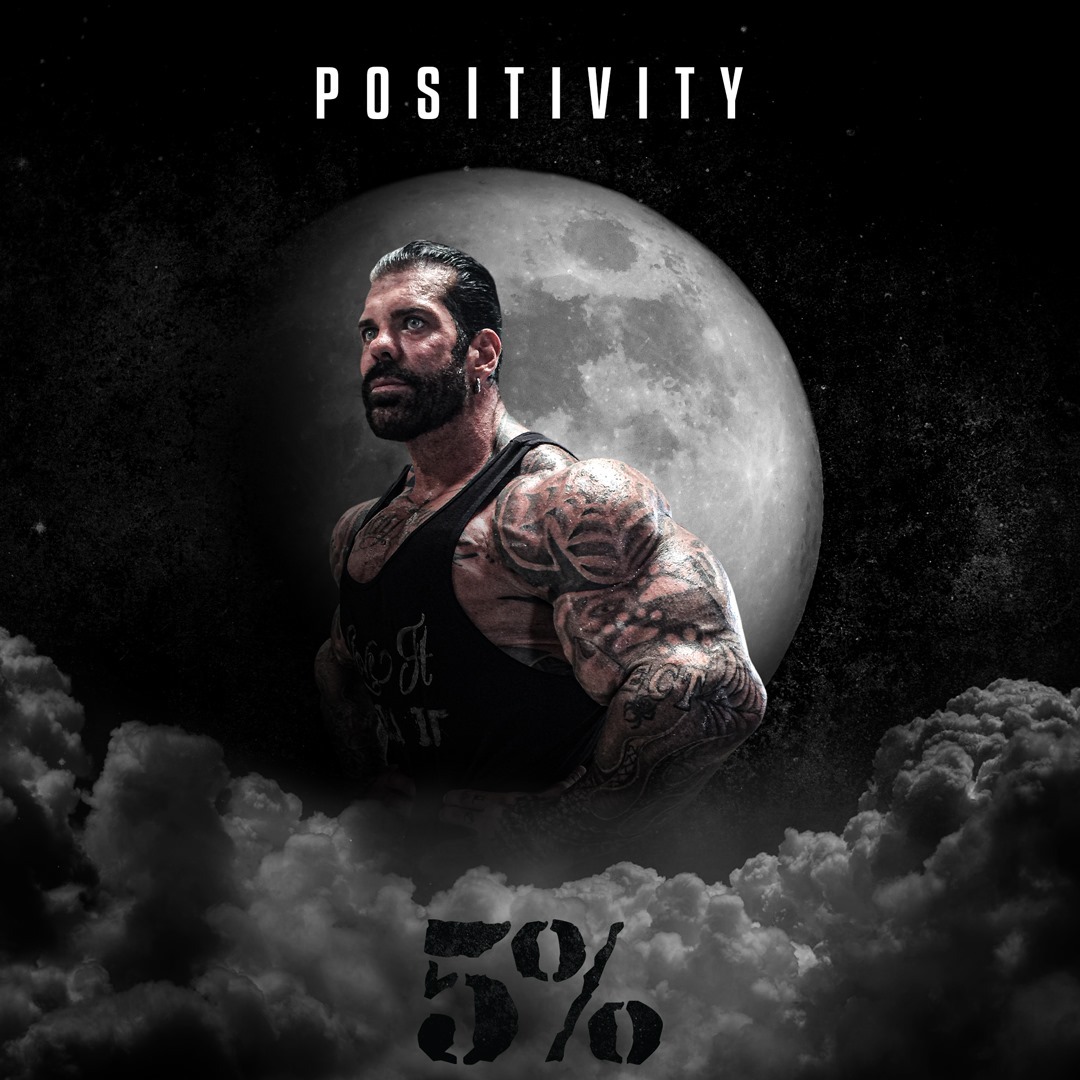


Comments and Discussion (Powered by the PricePlow Forum)